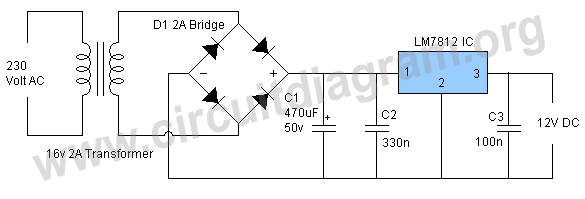
Flashing Brake Light for Motorcycles Circuit

This flashing brake light circuit is designed for motorcycles. When the brake light switch S1 is closed, power is supplied to U1 and U2. The circuit utilizes two inverters from U2.
The flashing brake light circuit operates by utilizing a combination of inverters and a timing mechanism to create a visual alert for vehicles behind a motorcycle. Upon activation of the brake light switch S1, a voltage is applied to the circuit, energizing the components U1 and U2. U1 typically functions as a power supply or a control unit, while U2 consists of two inverters that play a crucial role in generating the flashing effect.
The inverters in U2 are configured in such a way to produce a square wave output, which alternates the state of the brake light between on and off. This flashing pattern not only enhances visibility but also draws attention to the motorcycle, thereby improving safety during braking situations.
Key components of the circuit may include resistors and capacitors that determine the frequency of the flashing light. The values of these passive components can be adjusted to achieve the desired flash rate, allowing for customization based on user preference or regulatory requirements.
Additionally, the circuit may incorporate a diode to prevent back EMF from affecting the operation of the inverters, ensuring reliable performance. Proper layout and grounding techniques are essential to minimize noise and interference, which could disrupt the flashing function.
Overall, this circuit design is a straightforward yet effective solution for enhancing the visibility of motorcycle brake lights, contributing to safer riding conditions.This flashing brake light circuit can be used for motorcycles. When brake-light switch S1 is closed, power is applied to U1 and U2. Two inverters of U2, a.. 🔗 External reference
The flashing brake light circuit operates by utilizing a combination of inverters and a timing mechanism to create a visual alert for vehicles behind a motorcycle. Upon activation of the brake light switch S1, a voltage is applied to the circuit, energizing the components U1 and U2. U1 typically functions as a power supply or a control unit, while U2 consists of two inverters that play a crucial role in generating the flashing effect.
The inverters in U2 are configured in such a way to produce a square wave output, which alternates the state of the brake light between on and off. This flashing pattern not only enhances visibility but also draws attention to the motorcycle, thereby improving safety during braking situations.
Key components of the circuit may include resistors and capacitors that determine the frequency of the flashing light. The values of these passive components can be adjusted to achieve the desired flash rate, allowing for customization based on user preference or regulatory requirements.
Additionally, the circuit may incorporate a diode to prevent back EMF from affecting the operation of the inverters, ensuring reliable performance. Proper layout and grounding techniques are essential to minimize noise and interference, which could disrupt the flashing function.
Overall, this circuit design is a straightforward yet effective solution for enhancing the visibility of motorcycle brake lights, contributing to safer riding conditions.This flashing brake light circuit can be used for motorcycles. When brake-light switch S1 is closed, power is applied to U1 and U2. Two inverters of U2, a.. 🔗 External reference





